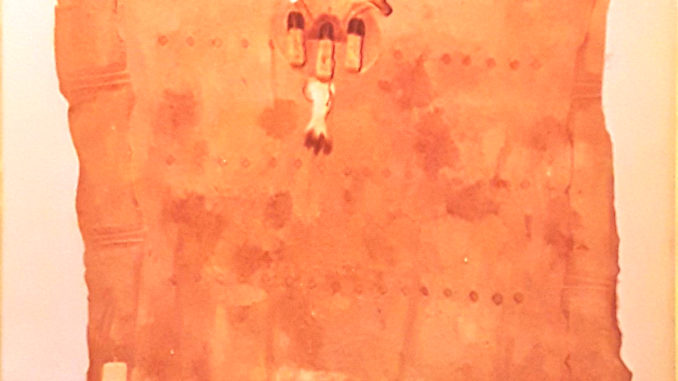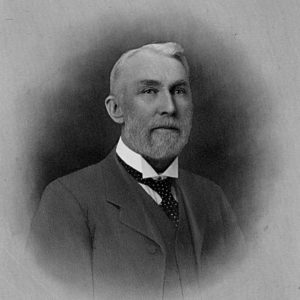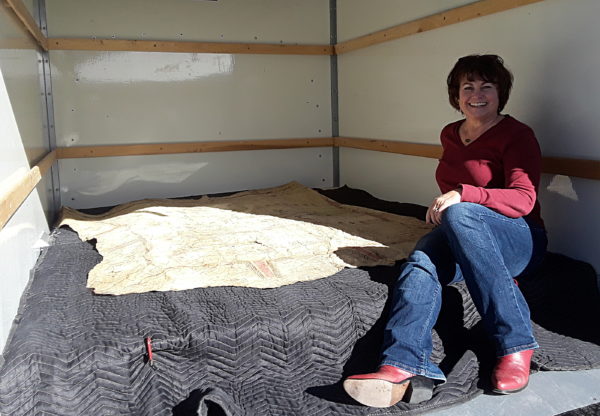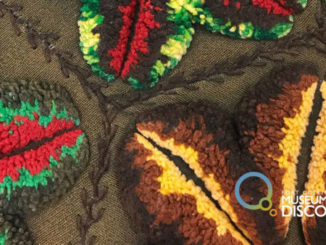
Matt Bartmann
[email protected]
For years, Polly Bennett of Fort Collins has been the keeper of a family heirloom—a large buffalo hide decorated with a painting of a buffalo head and other designs.
Bennett’s ties to the Fort Collins area go back longer than she can remember. A lot longer. Way back to what may have been the first white female child born in the area—Polly Bennett’s great-grandmother, Leila Loomis, who was born in the Poudre Valley in 1865.
Baby Leila was the daughter of Abner Loomis, Polly Bennett’s great-great-grandfather, whose ranch was northwest of Fort Collins in Bellvue, where Graves’ Morning Fresh Dairy now operates.
And that’s where the family story that was handed down along with the buffalo robe begins.
The robe was supposedly given to Abner Loomis by Chief Friday of the Arapaho people which also lived in the area, to celebrate the birth of his daughter, “although this is purely conjecture,” Bennett acknowledges.
The robe dates to the right time period (1850-1875), according to experts in Arapaho artifacts at the Wyoming University museum as well as the National Museum of the American Indian in New York City.
Chief Friday fits, too, because he often interacted with settlers in the Poudre Valley. According to the Fort Collins Historic Preservation Department (https://fcgov.com/historicpreservation/), Chief Friday began his life as Warshinun, or “Black Spot.” As a young boy, he became lost. Fur trapper Thomas Fitzpatrick found the boy on a Friday in 1831. Naming him “Friday,” Fitzpatrick took the boy along on his travels and sent him to school in St. Louis, where Friday learned to speak English. By the early 1840s, Friday had returned to his people in the Poudre Valley, where he acted as an interpreter between the Arapaho and white settlers, who dubbed him “Chief” Friday.

Although the facts surrounding how Abner Loomis came into possession of the buffalo robe are impossible to determine, Polly Bennett knew it was a rightful piece of this area’s history. Feeling that it would be unethical to keep it in her private collection, Bennett offered it to the Fort Collins Museum of Discovery.
According to Bennett, the hide/robe is “fragile, but in excellent condition,” considering its age. By donating it to the museum, she hoped that it could be “stabilized, properly preserved, and displayed for current and future generations.”
When Bennett approached the Fort Collins Museum of Discovery about donating the artifact, she was “honored that the curator of collections was able to secure full backing of the museum board for the acquisition.” She was surprised, as that is apparently not standard protocol when a piece requires such extensive restoration. But the powers that be at the museum agreed that the historical significance justified the acquisition.
The robe is quite large, about 9’ by 5’, generous enough to wrap around the body—and that body would have been a woman’s, said experts at Wyoming University and the National Museum of the American Indian (NMAI) in New York City.
They identified it as a “box and border” design, with painted images that reflect “a highly stylized representation of the viscera and body proportions of a buffalo,” according to analysis from the museum in Wyoming. Both museums agreed that this type of garment would have been made and painted by a woman, and would have been worn only by a woman.
It is unknown when the robe will be on display at the Museum of Discovery. “We had a conservator evaluate the robe, and our next step is to seek grant funding to treat the robe according to her recommendations. That work has to be complete before the robe can be safely displayed,” according to Linda Moore, curator of collections for the Museum of Discovery.
Polly Bennett still lives in Fort Collins, where the name of Loomis Street honors to this day the big role of her great-great-grandfather, Abner Loomis, in the city’s beginnings. She is happy to be able to share this piece of her family’s history with the community that she has always loved.

Polly Bennett poses with the family heirloom buffalo robe in the truck that took it away for restoration.
Support Northern Colorado Journalism
Show your support for North Forty News by helping us produce more content. It's a kind and simple gesture that will help us continue to bring more content to you.
BONUS - Donors get a link in their receipt to sign up for our once-per-week instant text messaging alert. Get your e-copy of North Forty News the moment it is released!
Click to Donate



